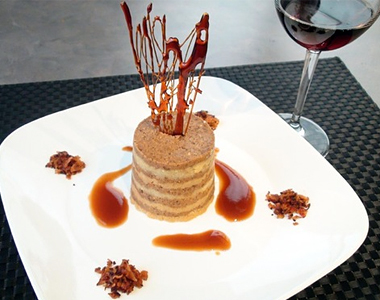
The thought that kept lingering this week in my mind, throughout the conversations we had in class,was the notion that one cannot stumble upon art. It cannot “sneak up on you “, there needs to be an awareness that what one in viewing must have the intention of being perceived as art. In the case of food, it must necessarily have two intentions, if it chooses to be considered art, both one of nourishment and one of art. I am sticking to a category of food the intents to be eaten, as opposed to, say a food sculpture, which is just a sculpture that has chosen the medium of food to work in. My first concern becomes whether or not by having both intentions in mind does one automatically become lesser or can both stand on equal ground? One goes to a restaurant, and just may be an assumption, when one is hungry, and seeming placing an inequality on the initial intentions.
Even if it is the case that both cannot stand on equal ground, does the decision become that of the creator with both intentions initially in mind? This is just to question how much the “creator/artist” is responsible for the dentition or label that is placed on their work. In having the aim to make audience consider food simply something to appease their hunger or have an aesthetic experience of it, does the creator actually have a say at all? If one is to find truth in the notion that art must be made aware to its audience then the previous question seems almost ridiculous, an yet if one can label an experience which one has encountered as aesthetic although it may not necessarily have been meant to be, than cannot that, if one is talking about food, make food that much closer to being considered art? I go to a restaurant and find that the food has moved me for one reason or another the way I was moved when having viewed a famous, well recognized piece of art. That is simply to wonder whether or not the creator had intended for the dish/work to be considered such my experience may still be a rather genuine one. It could be the case that the reason one is able to consider such matters is because one is dealing with food and not another art form, which may be the reason why it becomes so hard to truly consider food a major art form.
Could you ever have a complete aesthetic experience of the food pictured above(allowing for such a thing to exist) had you not first needed to eat, and how much does that, if any, take away from calling it art?


I think the relation between food and daily survival does have a negative impact on our conceptions of its aesthetic value. The only other (partial) parallel I can think of is architecture (of buildings), viewed as an extension of our need for shelter. Other art forms are no doubt a consequence of other basic needs (movement, sociality, the expression of emotion, perception generally, and communication), but the connection is less direct and immediate.
ReplyDelete